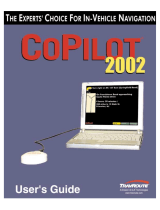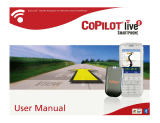
Garmin G1000 Cockpit Reference Guide for Mooney M20M & M20R
LIST OF FIGURES
LIST OF FIGURES
Figure 1-1 G1000 Controls ........................................................ 2
Figure 1-2 G1000 Power-Up ..................................................... 5
Figure 1-3 G1000 Normal Mode ............................................... 7
Figure 1-4 G1000 Reversionary Mode: Failed PFD .................. 7
Figure 2-1 Default PFD Information ........................................ 10
Figure 2-2 Additional PFD Information ................................... 11
Figure 2-3 PFD Setup Menu .................................................... 12
Figure 2-4 PFD Softkeys (1 of 2) .............................................. 14
Figure 2-4 PFD Softkeys (2 of 2) .............................................. 15
Figure 2-5 Airspeed Indicator .................................................. 17
Figure 2-6 Red Pointer at Vne ................................................. 17
Figure 2-7 Attitude Indicator ................................................... 18
Figure 2-8 Attitude Indicator Nose High ................................. 19
Figure 2-9 Attitude Indicator Nose Low .................................. 19
Figure 2-10 Altimeter ............................................................... 20
Figure 2-11 Colors Associated with the Altitude Alerter ........ 21
Figure 2-12 Altimeter within 1,000 ft. of Reference Altitude 21
Figure 2-13 Altimeter within 200 ft. of Reference Altitude ... 21
Figure 2-14 Altimeter (Metric) ................................................. 22
Figure 2-16 Marker Beacon and Vertical Deviation ................ 22
Figure 2-16 Vertical Speed Indicator ....................................... 23
Figure 2-17 ARC HSI ................................................................ 24
Figure 2-18 Horizontal Situation Indicator ............................. 24
Figure 2-19 Selected Heading Box .......................................... 25
Figure 2-20 Turn Rate Indicator and Trend Vector .................. 25
Figure 2-21 Selected Course Box ............................................ 25
Figure 2-22 HSI with Bearing Information .............................. 26
Figure 2-23 BRG1 Information Window .................................. 26
Figure 2-24 BRG2 Information Window ................................. 26
Figure 2-25 GPS INTEG, GPS SUSP, NAV1 and NAV2 ............ 27
Figure 2-26 Communication Frequency Window ................... 28
Figure 2-27 Navigation Frequency Window ........................... 28
Figure 2-28 Navigation Status Bars ........................................ 29
Figure 2-29 Navigation Status Bar Message .......................... 29
Figure 2-30 Transponder Status Bar ........................................ 30
Figure 3-1 Front Panel Controls ............................................... 32
Figure 3-2 Transceivers ............................................................. 35
Figure 3-3 Split COM, PA and Speaker ................................... 37
Figure 3-4 Marker Beacon ....................................................... 38
Figure 3-5 Marker Beacon Signal Indicator Lights on the PFD 39
Figure 3-6 Aircraft Radios ........................................................ 40
Figure 3-7 ICS Isolation ........................................................... 41
Figure 3-8 Reversionary Mode ................................................ 44
Figure 4-2 MFD Softkeys .......................................................... 46
Figure 4-3 ENGINE Page (Normally Aspirated) ....................... 48
Figure 4-4 ENGINE Page (Turbocharged) ................................ 48
Figure 4-5 Page Group Window .............................................. 50
Figure 4-6 Page Title Window .................................................. 50
Figure 4-6 Menu With Options ................................................ 51
Figure 4-7 Menu With No Options .......................................... 51
Figure 4-8 Navigation Map Page ............................................ 53
Figure 4-9 Navigation Map Range .......................................... 54
Figure 4-10 Navigation Map Panning ..................................... 56
Figure 4-11 TRAFFIC, TOPO and TERRAIN Softkeys ................ 57
Figure 4-12 Topography Scale ................................................. 58
Figure 4-13 MFD Navigation Status Window ......................... 59
Figure 4-14 Navigation Map Page Menu Options ................. 60
Figure 4-15 Traffic Map Page ................................................... 62
Figure 4-16 Weather Map Page ............................................. 66
Figure 4-17 Terrain Scale .......................................................... 68
Figure 4-18 Direct-to Page ....................................................... 70
Figure 4-19 Flight Plan Waypoint Direct-to ............................ 71
Figure 4-20 Nearest Airport Direct-to ...................................... 73
Figure 4-21 Manual Course Direct-to ..................................... 74
Figure 4-22 New Flight Plan .................................................... 76
Figure 4-23 Remove Waypoint Confirmation ......................... 77
Figure 4-24 Removing an Approach ....................................... 78
Figure 4-25 Flight Plan Catalog Page ..................................... 78
Figure 4-26 Flight Plan Catalog Page Options ....................... 79
Figure 4-27 Activate Stored Flight Plan Confirmation ........... 79
Figure 4-28 Delete Flight Plan Confirmation .......................... 80
Figure 4-29 Procedures Page ................................................... 82
Figure 4-30 Selecting an Approach Procedure ....................... 84
Figure 4-31 Selecting an Approach Transition ........................ 84
Figure 4-32 Activating an Approach Procedure ...................... 85
Figure 4-33 Approach with No Procedure Turn ...................... 87

























